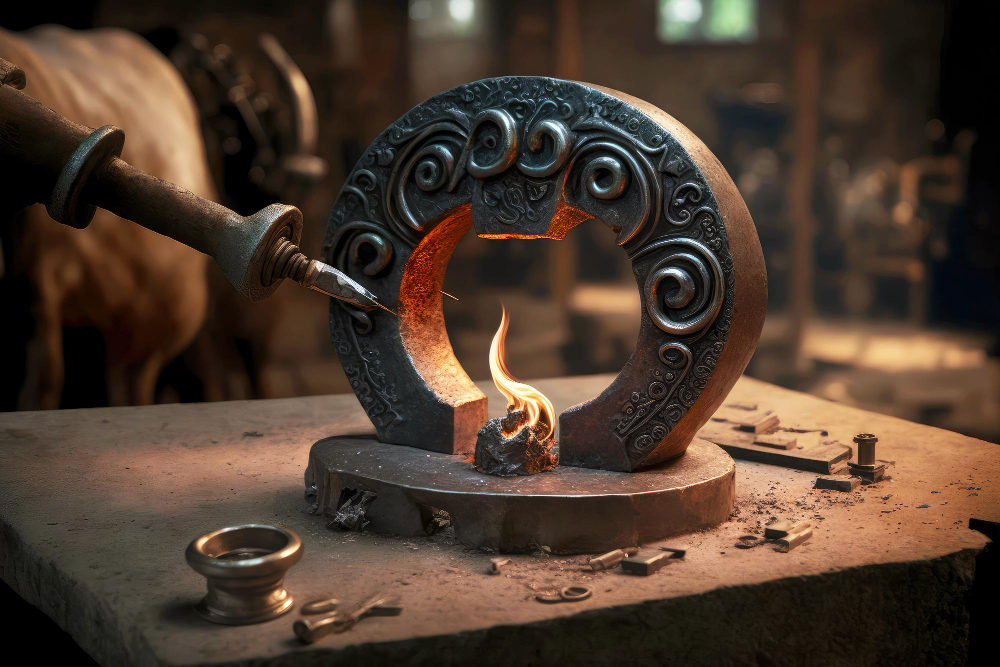Bronze sculpture, an art form dating back thousands of years, remains a marvel in the contemporary art world, celebrated for its durability, detail, and beauty. The process of creating a bronze sculpture is both complex and fascinating, involving ancient techniques that artists have refined over centuries. This intricate process, known as bronze casting, transforms a simple alloy into stunning pieces of art that can last for generations. This article delves into the step-by-step journey of creating a bronze sculpture, from the initial concept to the final piece, revealing the artistry and craftsmanship involved in bringing these magnificent works to life.
Concept and Model Creation
The journey of a bronze sculpture begins with an idea, a vision in the artist’s mind that is brought to life through a model. Traditionally, this model is sculpted in clay, wax, or another malleable material, allowing the artist to capture the intricacies of their design with precision. This initial model, also known as a maquette, serves as the blueprint for the final bronze sculpture. It is the artist’s opportunity to experiment with form, texture, and expression, refining their concept into a tangible representation.
The Lost Wax Casting Method
The core technique used in bronze sculpture making is the lost wax casting process, a method with roots in ancient civilizations. This multi-step process begins with the creation of a detailed wax model, which is made by coating the original clay maquette with liquid wax to capture every detail. Once the wax model hardens, it is covered with a heat-resistant material, forming a mold. The wax is then melted away (hence “lost wax”), leaving a hollow cavity in the shape of the sculpture. Molten bronze, heated to over 1,000 degrees Celsius, is poured into this cavity, filling the space once occupied by the wax.
Refining the Sculpture
After the bronze cools and solidifies, the outer mold is carefully removed, revealing the rough bronze sculpture within. This stage, known as chasing, involves meticulous work to refine the sculpture’s surface. Artists use tools to remove any imperfections, repair seams where the mold pieces met, and rework details that may have been lost during casting. This process requires a keen eye and steady hand, as the artist works to ensure that the final sculpture faithfully represents their original vision.
Adding Color and Texture
Patination is a chemical process used to color the surface of the bronze sculpture, adding depth, texture, and visual interest. This involves applying chemical solutions to the bronze, which react with the metal to create various hues and effects, from deep browns and rich blacks to vibrant greens and blues. The patination process is as much an art as it is a science, with the artist often experimenting with different formulas and application techniques to achieve the desired finish. The result is a sculpture that not only showcases the form and detail of the work but also possesses a unique surface quality that enhances its beauty.
Mounting and Presentation
The final stage in the creation of a bronze sculpture is mounting and presentation. The sculpture is often affixed to a base made of stone, wood, or metal, which serves both an aesthetic and structural function, enhancing the sculpture’s presence and ensuring its stability. The choice of base, like every other aspect of the sculpture’s creation, is carefully considered, complementing the work and reflecting the artist’s overall vision. With the sculpture mounted and finished, it stands as a testament to the skill, creativity, and dedication of the artist, ready to be shared with the world.
A Testament to Timeless Craftsmanship
The creation of a bronze sculpture is a testament to the enduring appeal of this ancient art form and the timeless craftsmanship it embodies. From the initial concept to the final touches, each step in the process combines technical skill with artistic vision, resulting in works of art that captivate and inspire. Bronze sculptures, with their beauty, detail, and permanence, continue to hold a revered place in the art world, bridging the past with the present and demonstrating the incredible potential of alloy turned art.
